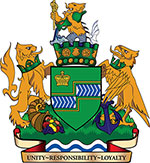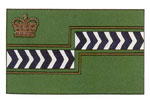About Niagara Region
Growing Better Together
The Council Strategic Priorities serve as a roadmap for Niagara Region until 2026
Niagara Region is a Regional municipality serving more than 480,000 people who call Niagara home. We provide services essential to your day-to-day life, from clean water, roads and waste collection to public safety, housing and more.
We believe in social, environmental and economic choices that support our diverse community and foster collaboration with our partners in making Niagara a prosperous place for everyone.
As a Regional government, Niagara Region is composed of 32 council members, who represent Niagara's 12 cities, towns and townships. Geographically, our region is as diverse as the municipal services that sustain it. Located between Lake Ontario and Lake Erie, Niagara encompasses an area of 1,852 km2 and is home to communities rich in both character and history.
Programs and services
- Affordable housing
- Business licensing
- Children's services
- Community housing
- Court services
- Emergency response management
- Economic development
- Homelessness prevention
- Planning and development
- Public health programs
- Water and wastewater treatment
- Land ambulance and dispatch (Emergency Medical Services)
- Regional roads and bridges
- Garbage collection and landfill operations
- Social assistance
- Seniors services
- Transportation
Video: The Story of Niagara Region
Make Niagara your home
Learn about moving here and what Niagara has to offer you and your family.
Symbols of Niagara Region
- Vision, mission and values
Vision
Niagara Region is a unified community of communities with diverse opportunities and qualities. Together we strive for a better tomorrow.
Mission
Niagara Region will serve its residents, businesses and visitors through leadership, partnership and the provision of effective and community-focused services.
Values
Our corporate values guide our decision-making and actions every day.
- Respect - We treat everyone equitably with compassion, sensitivity and respect
- Serve - We serve Niagara with pride, care and excellence
- Honesty - We value honesty, integrity and trust
- Choice - We believe in social, environmental and economic choices that support
our diverse community - Partnerships - We foster collaboration and value partnerships
- Logo

The logo was designed to present a recognizable positive image for Niagara Region.
The logo is a stylized map of the region in green and blue. The Niagara River and Welland Canal, both internationally known resources are highlighted in the design and coloured blue. The rest of the region is green, signifying the agricultural and environmental areas that are characteristic of the region. The colour green also represents growth and development.
Niagara Region is characterized as one geographic area which shows the unity of the existing municipal structure.
-
Coat of arms

Niagara Region celebrated its 25th Anniversary in 1995. The coat of arms, developed through the offices of the Chief Herald of Canada and authorized by Queen Elizabeth II, was unveiled on October 21, 1995 at a re-enactment of the inaugural meeting of Regional Council.
The central element is the shield. It's a pictorial representation of Niagara past and present.
- The green background represents the rich agricultural lands and abundant parks of the region
- The blue and white band in the center represents the Niagara Escarpment and Niagara Falls, as well as the Welland Canal with its locks represented in the chevrons
- The twelve blue chevrons also represent the twelve area municipalities that link together in the region
- The gold lines represent the wealth which flows from the attributes of Niagara
- The Royal Crown, in gold, symbolizes the first parliament in Ontario in Newark and the strong loyalist tradition. Its inclusion was approved personally by Queen Elizabeth II.
- The coronet, above the shield, is topped by a mythical "river lion" that holds a ceremonial native pipe, a "calumet", to honour Niagara's first inhabitants, the Neutral Nations and the Iroquoian Loyalists
- The falling water represents Niagara Falls, one of the natural wonders of the world
- The roses and shells reproduce the emblems of the former counties of Welland and Lincoln
- The supporters, the eagle and the lion, are prominently featured in the personal arms of Sir Isaac Brock, a hero of the War of 1812 and the Battle of Queenston Heights. They symbolize strength, clarity of vision and courage. The coronets around their necks represent the loyalists and the military, both important parts of Niagara's beginnings and an influence today
- The anchor denotes the importance of maritime commerce and recreational opportunities on our lakes. The cornucopia stands for our agricultural wealth.
- The wavy lines underscore the importance of the Great Lakes and canal and rivers to Niagara
- The Regional motto " UNITY * RESPONSIBILITY * LOYALTY " recognizes the important foundations of Niagara's history and imparts a vision of the future upon which generations may focus
- The flag reproduces the shield, in banner form, in proper heraldic tradition
Official blazon

The Official Blazon is the formal, legal description of the Coat of Arms in the language of medieval England. It is a combination of Latin, French and olde English.
In proper heraldic terms, the written description of Niagara's Coat of Arms is produced below in medieval style.
Arms
Vert a fess of twelve chevrons set in fess Azure couped in the centre with the sinister half raised towards the chief all cotised with a barrulet and in the canton a representation of the Royal Crown Or.
Crest
On a wreath Or and Vert issuant from a mural coronet Vert set with a frieze of shells alternating with roses Or a river lion Or and Argent rising from water Azure bearing on its shoulder a vase Vert mouth downwards from which pours water Azure its dexter forepaw upraised and bearing a calumet in pale Or.
Supporters
On a grassy mound Vert rising above barry wavy of three Argent Azure and Argent dexter a lion Or gorged with a loyalist military coronet Vert its dexter forepaw resting on a cornucopia also Or its mouth in base from which spill apples, grapes and peaches proper sinister an eagle Or gorged with a loyalist civil coronet Vert its sinister wing resting on an anchor Azure.
- Tartan

Niagara Regional Police Service unveiled the Niagara Region Tartan on May 12, 2007. The tartan colours, adapted from the Regional Coat of Arms and Niagara Regional Police crest, were woven into a rich and varied design.
- Dark blue represents the vast waters of the two great lakes, Erie and Ontario
- Light blue signifies the Niagara River and the Welland Canal, traversing the region adjoining the Great Lakes, promoting international commerce and providing activities for residents and visitors
- White represents the mighty Niagara Falls, its voluminous rising mists and raging white water rapids
- Green symbolizes the fertile, rich and vibrant agriculture of our region, the world-renowned parks and recreational areas
- Red is significant of our rich military history. It's a tribute to our predecessors who by their valiant endeavours have preserved our way of life and our great country.
History of the tartan
In 1995, when Niagara Region celebrated its 25th Anniversary, the coat of arms was unveiled. It was developed through the offices of the Chief Herald of Canada and authorized by Queen Elizabeth II. The central element, the shield, was then incorporated into the crest for the Niagara Regional Police Service. As well, the Chain of Office was created, and includes the coat of arms of each of our 12 area municipalities.
To build on this heritage, the tartan colours, taken from the Regional Coat of Arms and Niagara Regional Police crest, were woven into a perfectly balanced design. In 2006, members of the Niagara Regional Police Pipe Band approached the Chief of Police with to develop this new tartan to be worn by the band. Chief Wendy E. Southall approved the proposal which was presented to the Regional Culture Committee. The idea was adopted and presented to Regional Council where the Niagara Region Tartan was unanimously accepted.
Uses of the Tartan
The Niagara Regional Police Pipe Band proudly wear the tartan. The tartan is woven in Scotland by the "Lochcarron Weavers" and then made into uniforms by Burnetts and Struth of Barrie, Ontario.
In recognition of the significance of this important symbol, the tartan is registered with the Scottish Tartan Authority and The Patent Office. This registration will ensure that no other tartan will be accepted as a "Niagara Tartan".





